#cariamiform
Explore tagged Tumblr posts
Text
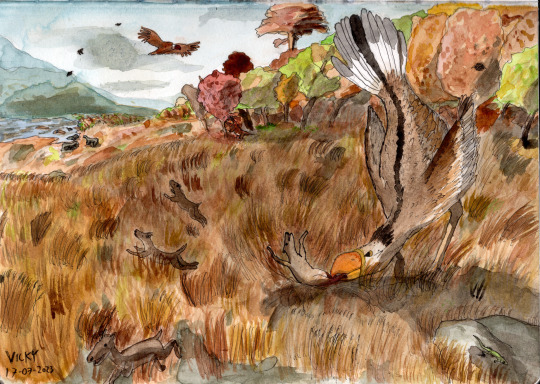
On the edge of a Miocene South American grassland, a group of Thoatherium is ambushed by a Phorusrhacos. They scatter, but the terror bird catches one of the litopterns, lifts it high up into the air, and SLAMS it down on the ground to kill it. Other nearby animals have mixed feelings about this situation. Tupinambis flees for its life, while Dryornis flies a little closer in case it can have a bit for itself. Hapalops and Astrapotherium are unbothered and have business of their own to take care of.
#phorusrhacos#thoatherium#terror bird#phorusrhacid#litoptern#cariamiform#bird#mammal#santa cruz formation#miocene#neogene#south america#autumn#tupinambis#lizard#squamate#dryornis#new world vulture#accipitriform#hapalops#ground sloth#pilosan#astrapotherium#astrapothere#my art#paleoart#palaeoblr#cw: animal death#cw: blood
78 notes
·
View notes
Text

So I’m researching seriema feet because I just cannot seem to get the terror bird’s feet right in the watercolour I’m working on, and I came across THIS fucker. Like what on Earth. Seriema. seriema plz. Why are you like this? The worst part is that since those are in fact their ankles, this is basically a seriema just touching their entire feet to the ground like a human, going ‘this is what you look like’.
34 notes
·
View notes
Text
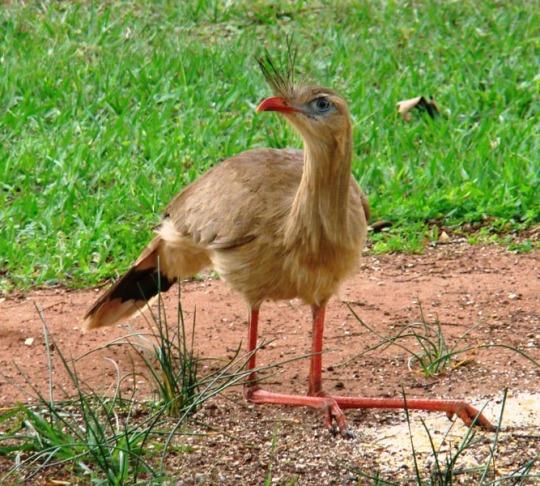

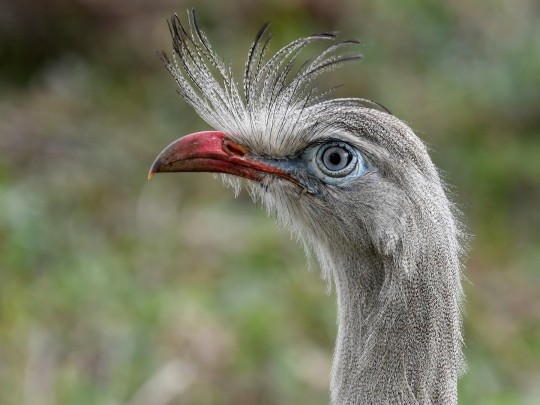
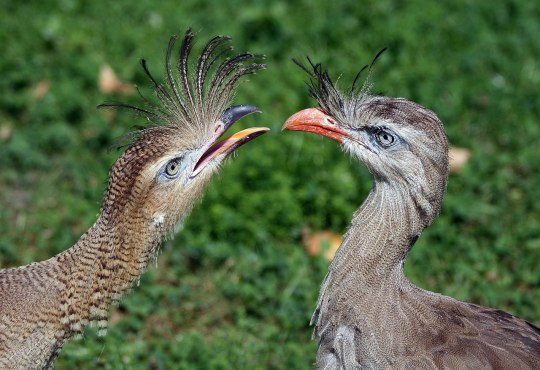

Red-legged Seriema (Cariama cristata), family Cariamidae, order Cariamiformes, found in central and eastern South America
Seriemas were once placed in the Gruiformes, but in 2014 were elevated to their own order. They are most closely related to Falconidae, Psittaciformes and Passeriformes.
They are territorial, and some people ion South America use them as guard animals.
Seriemas eat a wide variety of small prey, and are known to pick up snakes with their beaks and slam them hard onto the ground repeatedly, to subdue/kill them.
photographs by João Menezes, Silvia Faustino Linhares, Brian Henderson, Manfred Warner, & Stephan Lorenz
756 notes
·
View notes
Text

April Fools 2023: How Titanis Lost The Right To Bear Arms
Huge, flightless, and carnivorous, the phorusrhacids (or terror birds) were some of the largest apex predators in South America during its Cenozoic "splendid isolation" as an island continent – and they were possibly the closest that birds ever came to reclaiming the ecological roles of their extinct non-avian theropod dinosaur relatives.
And for a while in the late 1990s and early 2000s there was a hypothesis that they'd even re-evolved clawed hands.
This idea was based on the wing bones of Titanis walleri, the only terror bird known to have dispersed northwards during the Great American Biotic Interchange when North and South America became connected via the Isthmus of Panama.
Living during the Pliocene and Pleistocene in Florida and Texas, between about 5 and 1.8 million years ago, Titanis stood around 1.5-1.8m tall (~5-6') and was heavily built, with long strong legs and a massive hooked beak. Remains of its small wings were incomplete and fragmentary but had seemingly unusual joints, with what looked like a stiffer wrist and more flexible "fingers" than other birds, which led paleontologist Robert Chandler to propose in 1994 that this terror bird species had modified its wings into clawed grasping arms similar to those of dromaeosaurs, used to restrain prey animals while its beak tore them apart.
But the idea of a giant murder-bird with added meathook-hands only lasted about a decade. Further investigation in 2005 showed that Titanis' arms weren't that weird after all – the same sort of joints are found in terror birds' closest living relatives, the seriemas, and so Titanis really had the same sort of small vestigial wings as many other large flightless birds.
…However, there still could have been some claws on there. Many modern birds actually have one or two small claws on their hands that aren't visible under their feathers, and terror birds like Titanis having something like that going on is completely plausible – they just wouldn't have been using them for any sort of specalized predatory function.
———
NixIllustration.com | Tumblr | Twitter | Patreon
#april fools#titanis claw hand hook bird claw#inaccurate paleoart#science illustration#paleontology#paleoart#palaeoblr#retrosaurs#titanis#phorusrhacid#terror bird#cariamiformes#bird#dinosaur#art
386 notes
·
View notes
Text

photo source
#bird#poll#red legged seriema#cariamiformes#cariamidae#cariama#cariama cristata#america#south america
20 notes
·
View notes
Text
whoa! Big post! Scary! But still, please check it out! It has pictures :)
So before I continue my papa Adam staff and sisters exorcists I want to settle some of my headcanons on them + heaven in general (including some redesigns)
Birds of prey AU
How were exorcists created.
- Hell was growing. So was its power. Heaven began to feel threatened by Lilith and her kingdom.
- So they decided they needed protection. Seraphims wanted to create an invincible army to protect the citizens of Spheres. Army that would consist of utterly loyal soldiers.
- Exorcists were created in the likeness of birds of prey - beautiful, vicious and smart.
- Exorcist weren’t exactly a heavenborns. Technically, they were never born. They were created. But still, they’re not robots. Actually, all of them have personalities. Their own wishes, dreams and thoughts. But one thing they have - never doubt Heaven and orders. Never doubt Adam. They can question a lot of stuff in their lives, but never Heaven.
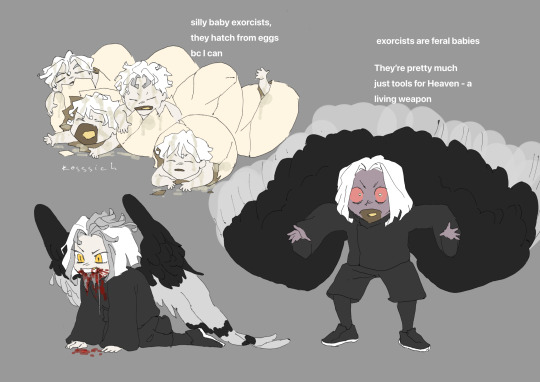
- They don’t have compassion, they don’t show mercy. They are supposed to be baby soldiers.
- Magic of Lilith can slip through Pearly Gates. And one of the newfound army was affected by that. One of the nestlings - so different from others - was created with a curse and a blessing - it was given the free will. A will to question, a will to show compassion, a will to seek knowledge and a will to have soul.
- Sera and Adam had their doubts about Vaggie, but decided to keep her, so the only thing left was to keep an eye on the broken child, preventing her from turning against Heaven.
Exorcists species.
For exorcists were created in the likeness of birds of prey, they vary from each other.
They have their own strengths and weaknesses. Their wings are different as well, they may look alike, but they function differently.
There’s only three exorcists who have different necklaces from the others - Vaggie, Lute and the killed one, so I decided to go with this number three.
I chose these three different orders of birds of prey:
1. Falconiformes - different species of falcons - really fast, agile, perfect eyesight.
2. Accipitriformes - hawks and eagles - strong, fast, vicious, perfect eyesight.
3. Strigiformes - owls - not as fast as other birds, but they can fly completely silent, perfect assassins, agile, perfect eyesight and perfect hearing as well.
No Cariamiformes, because they can’t fly, sorry birdies 😔
Vaggie is the only specie of Tytonidae, just to prove how different she is.
Other exorcists belonging to owls is species from Strigidae family.
- I have a headcanon, that Heaven is very technically advanced (we saw a glimpses of Heaven architecture and they had this cool looking microchips on the floor, LED masks, cool stuff). Whatever Vox is doing, Heaven is steps ahead. So I wanted to recreate this headcanon in exorcists redesign (don’t get me wrong, I like the original design, I do get that they supposed to look like demons with their horns, all grey and black, and like crusaders with this chain mail, yeah yeah yeah, but I like birds more).
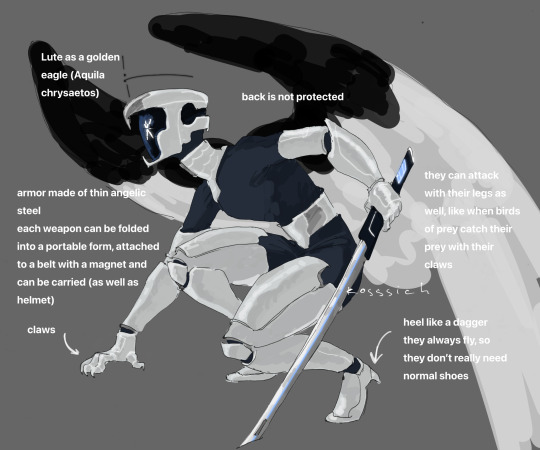
- So, the exorcists army divided into three squads - hawks and eagles under Lute’s command, owls under Vaggie’s command and falcons under Dead exorcist command. And Adam is Harpy Eagle - the largest eagle and one of the kind.
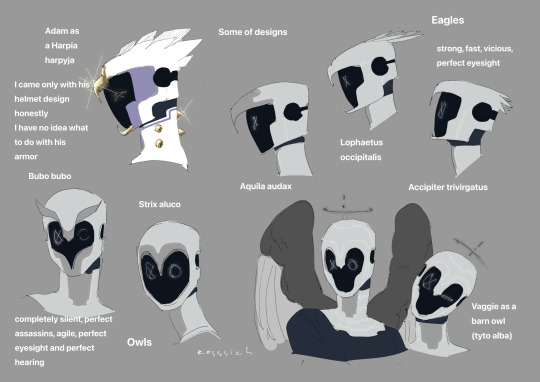
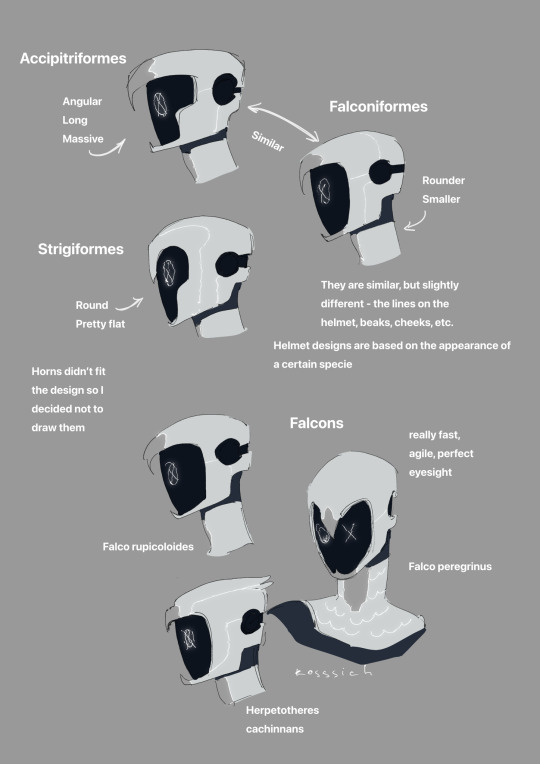
- Exorcist are used for service in Heaven - babysitting, escorts to the other Spheres, guards, it’s not like Heaven needs guards, but my imagination ends here lol. It’s just, not like they need to train all 365 days a year.
- Winners know about exorcists, but not about the extermination. They know Hell and its threat, so Heaven never hides the information about its army.
- Exorcists can be killed and they know that. But they still act like they’re invincible, because in some way, they really are.
- An exorcist can be killed in two ways:
1. By other angels with angelic steel.
2. By sinners and hellborns with angelic steel.
3. But the difficulty - to kill an angel you need to rip off their halo. If the sinner or a hellborn touches a halo, they will just burn alive, killed by holy flames. (They tried to kill exorcists, didn’t work). Exorcists always fly. They never step on Hells ground. Always in the sky, deadly and unpredictable.
- They’re not stupid. They don’t leave their weapon in dead bodies. They don’t need sinners to have angelic steel. But still, steel can be gathered from arrows and bullets mostly - it’s a hard and dirty work to dig through all the bodies just to find a few bullets. This is exactly why Carmine’s angelic weapon is insanely expensive and difficult to get.
#art#fan art#hazbin hotel#vaggie#hazbin hotel vaggie#hazbin hotel lute#hazbin hotel exorcists#hazbin hotel redesign#hazbin hotel adam#hazbin hotel heaven#my headcanons are pretty unsettled idk#excuses to draw exorcists lmao#also I took a lot of inspiration from Naruto#can you tell it?#baby soldiers who deserve to have a normal childhood#and not becoming a living weapon for their village insane right#all my knowledge about bird comes from Wikipedia#birds of prey au
235 notes
·
View notes
Text
So it turns out Terror Birds/Cariamiformes are, in every possible sense, "Dromaeosaurs 2: The Quickening"
512 notes
·
View notes
Text
Fossil Novembirb: Day 2 - The Survivors
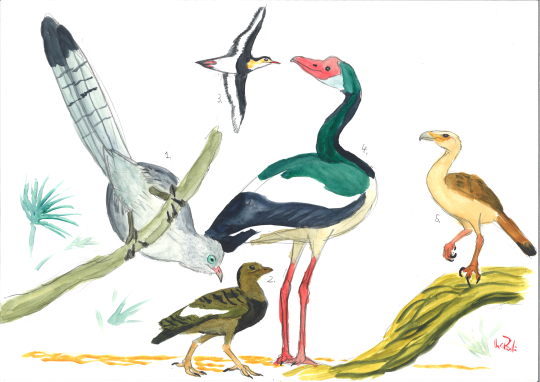
Birds survived the catastrophic End-Cretaceous extinction event, but only by the skin of their beaks. Only a handful of bird species were able to make it. And for the few survivors, the slowly healing world was full of opportunity. They started to expand their ranges and ecological niches, and started to diversify in an exponential rate.
Tsidiiyazhi: The first known mousebird, and one of the earliest known perching birds, or telluraves. Known from New Mexico.
Qinornis: A peculiar flighted ground bird known from China. It might be the only stem-bird to have survived the K/Pg extinction event.
Australornis: A probable relative of Vegavis, a small diving seabird known from Aotearoa (New Zealand)
Conflicto: A large wading waterfowl, related to ducks and geese, and resembling presbyornithids (Flamingo-ducks). Known from Antarctica.
Qiashanornis: One of the earliest known Cariamiformes (seriemas, terror birds and kin) found in China. It had grasping talons to catch small prey.
#Fossil Novembirb#Novembirb#Dinovember#birblr#palaeoblr#Cenozoic Birds#Dinosaurs#birds#Tsidiiyazhi#Qinornis#Australornis#Conflicto#Qiashanornis
106 notes
·
View notes
Text
Qianshanornis
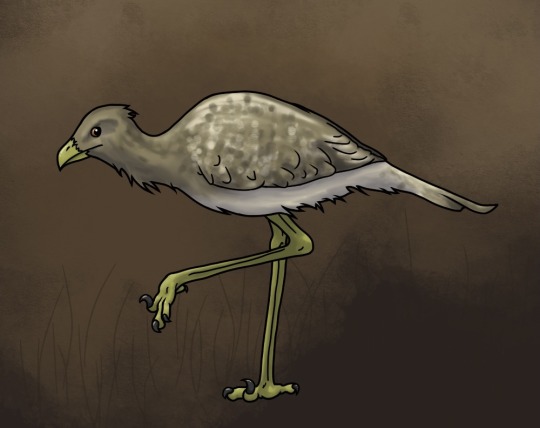
It’s so hard to imagine what an animal looks like with only some feet to go off of, but I’m repeatedly in awe of how scientists can get so much information out of just a few fossilised bones.
Sources and stuff under the cut.
Most facts come from this article:
Gerald Mayr , Jian Yang , Eric De Bast , Cheng-Sen Li & Thierry Smith (2013): A Strigogyps-like bird from the middle Paleocene of China with an unusual grasping foot, Journal of Vertebrate Paleontology, 33:4, 895-901
I’ve also looked at some paleoart for reference:
“The other terror birds - Cariamiformes” by Artbyjrc (Deviantart)
@alphynix’s illustration of Qianshanornis
I’ve also looked at a lot of pictures of seriemas for this. It’s basically a seriema with funky feet tbh…
37 notes
·
View notes
Text

Red-legged Seriema (Cariama cristata), family Cariamidae, order Cariamiformes, Pantanal, Brazil photograph by Djamel Milano
6 notes
·
View notes
Text
The extinct Phorusrhacid, commonly known as terror birds. Phorusrhacid is a type of Cariamiformes an order of mainly terrestrial birds.
Found in Seymour Island in West Antarctica, on its La Meseta Formation.
These phalanges belonged to a large or even giant predator, estimated to have had a substantial body mass of around 100 kg.
The taxonomic assignment of the fossils was made following a thorough comparison with representatives of different orders of birds.
2 notes
·
View notes
Text

Red-legged Seriema (Cariama cristata), family Cariamidae, order Cariamiformes, Uruguay
Seriemas were once placed in the Gruiformes, but in 2014 were elevated to their own order. They are most closely related to Falconidae, Psittaciformes and Passeriformes.
They are territorial, and some people ion South America use them as guard animals.
Seriemas eat a wide variety of small prey, and are known to pick up snakes with their beaks and slam them hard onto the ground repeatedly, to subdue/kill them.
photograph by Silvia Viazzo
245 notes
·
View notes
Text
For everyone's convenience:

If you're wondering where terror birds fit into the equation, they're cariamiforms, meaning their closest living relatives are seriemas...which barely do them any justice since it's like comparing big cats to mongooses. Psilopterus is one of the smallest terror birds and is still horribly robust compared to a seriema, as you can see here
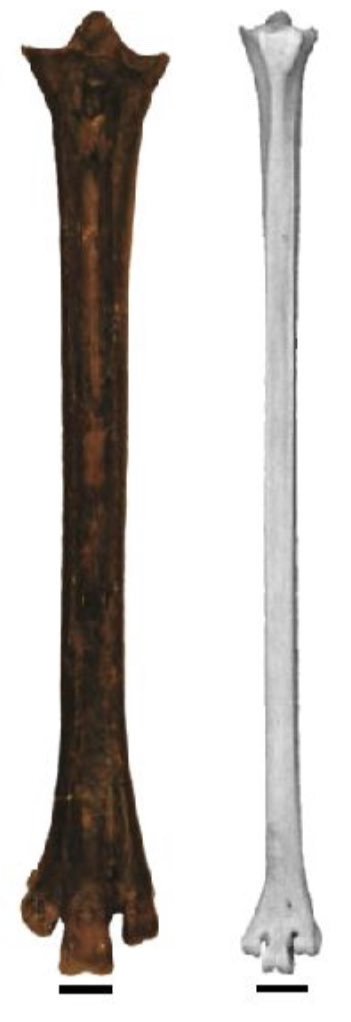
The more famous giant phorusrhacines, like Phorusrhacos itself and Kelenken? Yeah uh...
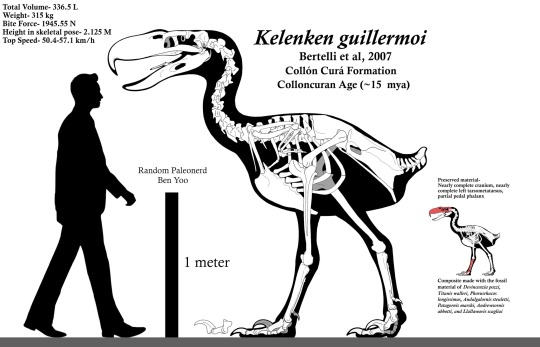
...big boi. Big, robust boi. Far from the lanky carnivorous ostriches you're used to. These things were like non-avian theropods resurrecting themselves, even down to these guys undoing ancestral bird cranial neoteny in order to strengthen their jaw muscles for a good bite.
the only bad part about going to the zoo is hearing adult men confidently tell their kids or gfs objectively incorrect information about the animals we’re looking at and having to remain silent. do u know the restraint it takes to say nothing when a grown adult man tells someone “falcons are in the same family as eagles” next to me? no babygirl. no.
#oh my god this turned into a rant about terror birds lmao#sorry fellow tumblr people#anyway hope y'all learned something from little ol' me!
73K notes
·
View notes
Text
List of Birds organized by Order + locations:
Accipitriformes:
Bearded vulture
California condor
Cooper's hawk
Osprey
Red-shouldered hawk
Steller's sea eagle
Anseriformes:
Bar-headed goose
Barnacle goose
Black swan
Common merganser
Red-breasted goose
Snow goose
Trumpeter swan
Apodiformes:
Common swift
Ruby-throated hummingbird
Bucerotiformes:
Eurasian hoopoe
Cariamiformes:
Red-legged seriema
Casuariiformes:
Emu
Southern cassowary
Cathartiformes:
Black vulture
Turkey vulture
Charadriiformes:
American oystercatcher
Atlantic puffin
Black-headed gull
Black skimmer
Black-tailed godwit
European herring gull
Killdeer
Northern lapwing
Ruddy turnstone
Western sandpiper
Ciconiiformes:
White stork
Columbiformes:
Common wood pigeon
Eurasian collared dove
Luzon bleeding-heart
Nicobar pigeon
Stock dove
Victoria crowned pigeon
Coraciiformes:
Blue-capped kingfisher
Common kingfisher
Cuculiformes:
Asian koel
Greater roadrunner
Yellow-billed cuckoo
Eurypygiformes:
Kagu
Falconiformes:
American kestrel
Common kestrel
Galliformes:
Indian peafowl
Palawan peacock-pheasant
Plain chachalaca
Scaled quail
Western capercaillie
Gaviiformes:
Common loon
Gruiformes:
American coot
Australasian swamphen/pūkeko
Blue crane
Common moorhen
Sandhill crane
Sora
Whooping crane
Passeriformes:
American bushtit
American robin
Australian raven
Baltimore oriole
Barn swallow
Black-billed magpie
Black-capped chickadee
Black-headed grosbeak
Black-throated sparrow
Blue-headed vireo
Blue jay
Bluethroat
Brown thrasher
California scrub jay
California towhee
Canada warbler
Canyon wren
Cave swallow
Cedar waxwing
Chestnut-backed chickadee
Common blackbird
Common chlorospingus
Common raven
Eastern wood pewee
Eurasian blue tit
Eurasian bullfinch
Eurasian golden oriole
Eurasian jay
Eurasian magpie
European robin
Goldcrest
Great-tailed grackle
Great tit
Hooded crow
House sparrow
Indigo bunting
Kirtland's warbler
LeConte's sparrow
Long-tailed tit
Mexican jay
Painted bunting
Phainopepla
Pine siskin
Pin-tailed whydah
Pinyon jay
Pygmy nuthatch
Red winged blackbird
Rook
Saltmarsh sparrow
Satin bowerbird
Spotted towhee
Steller's jay
Tufted titmouse
Wallcreeper
Warbling vireo
Western tanager
White-breasted nuthatch
White-throated dipper
White-throated magpie-jay
Yellow-rumped warbler
Pelecaniformes:
Black-crowned night heron
Brown pelican
Great blue heron
Great egret
Great white pelican
Least bittern
Roseate spoonbill
Shoebill stork
Snowy egret
Phoenicopteriformes:
American flamingo
Chilean flamingo
Piciformes:
Acorn woodpecker
Clark's nutcracker
Great spotted woodpecker
Lesser spotted woodpecker
Lewis's woodpecker
Northern flicker
Pileated woodpecker
Red-bellied woodpecker
Red-headed woodpecker
Podargiformes:
Tawny frogmouth
Podicipediformes:
Pied-billed grebe
Procellariiformes:
Wilson's storm-petrel
Psittaciformes:
Australian king parrot
Chestnut-fronted macaw
Citron-crested cockatoo
Cockatiel
Galah
Gang-gang cockatoo
Pacific parrotlet
Red-masked parakeet
Rose-ringed parakeet
Sulphur-crested cockatoo
Strigiformes:
Barn owl
Barred owl
Eurasian eagle-owl
Suliformes:
Anhinga
Blue-footed booby
Double-crested cormorant
Trogoniformes:
Elegant trogon
Locations:
Africa
America
Antarctica
Asia
Australia
Eurasia
Europe
Oceania
8 notes
·
View notes
Text
Fossil of Huge Terror Bird Found in Colombia
Paleontologists have unearthed and examined a fossilized leg bone of a phorusrhacid bird that lived 12 million years ago in South America. A model of Paraphysornis at the Natural History Museum Vienna. Image credit: Armin Reindl / CC BY-SA 4.0. Terror birds are members of Phorusrhacidae, a family of large, carnivorous, flightless birds within the order Cariamiformes. These extinct birds had a…

View On WordPress
0 notes
Text
i still don’t know what to rename boom :( no other name Fits Her which is sooo frustrating bc i don’t like the name boom anymore!!!
cara, from caracara / caracarinae
snake, despite her lack of relation to the scuttleverse, from serpentarius
caria(mae), from cariamiformes / cariamae
sparrowhawk, from sparrowhawk, + it sounds like a certain book character
i’m using cariamae. sorry to all the potential people on tumblr looking for a bird </3
1 note
·
View note